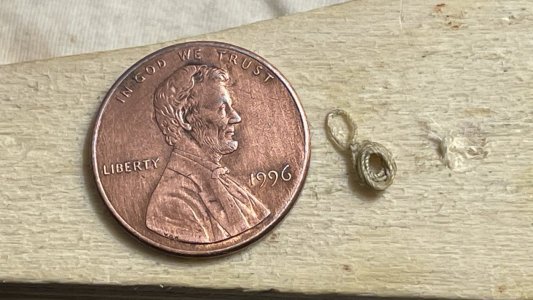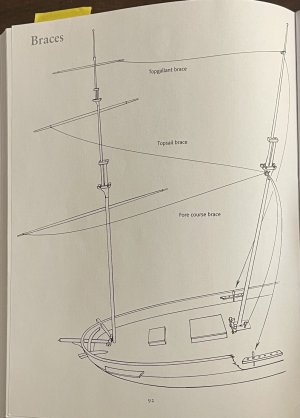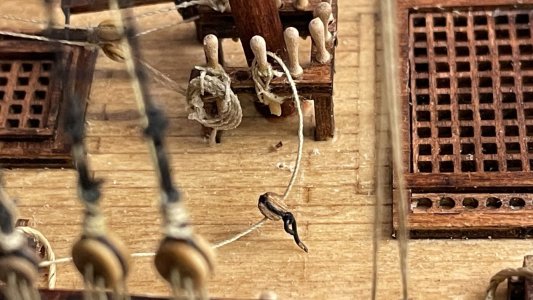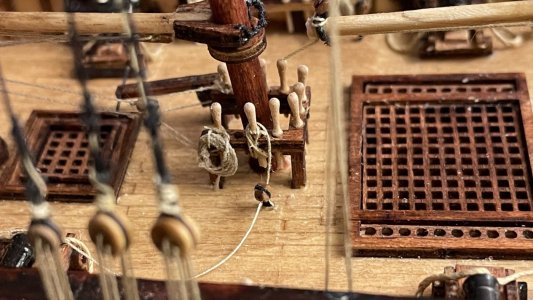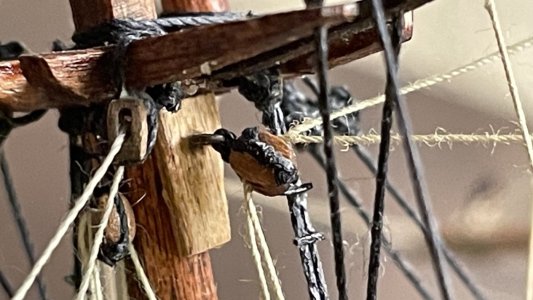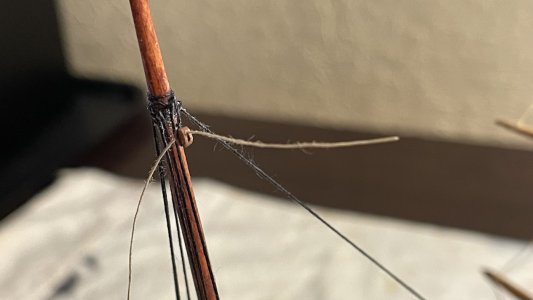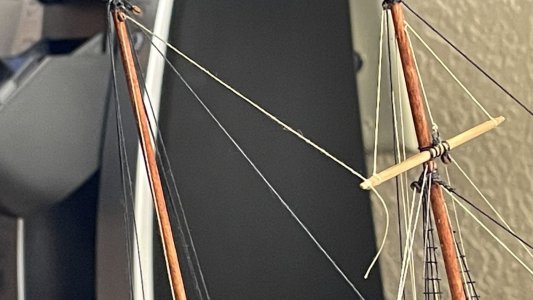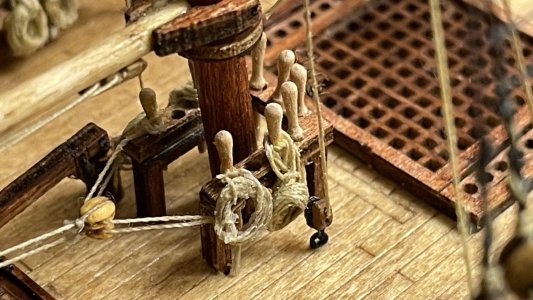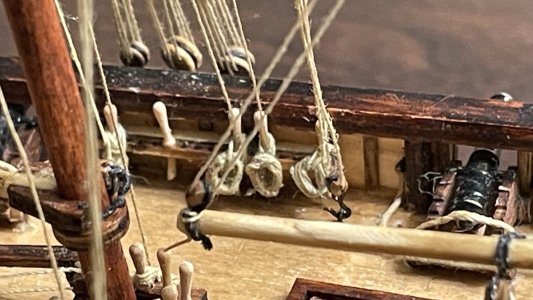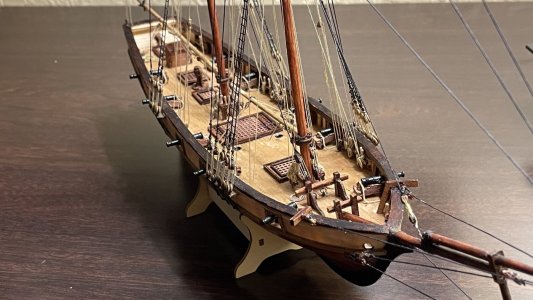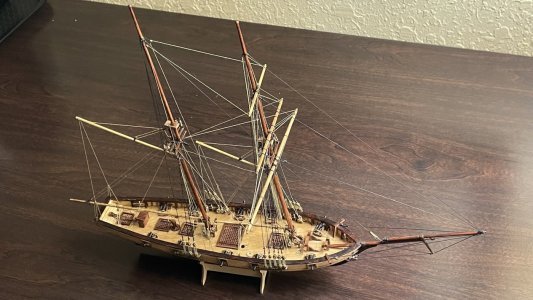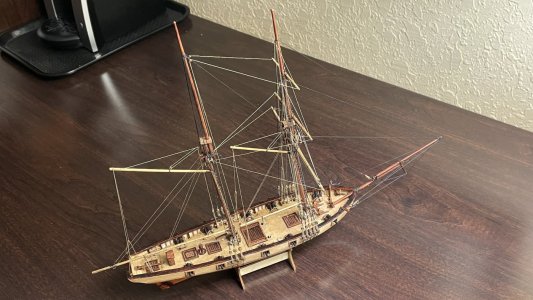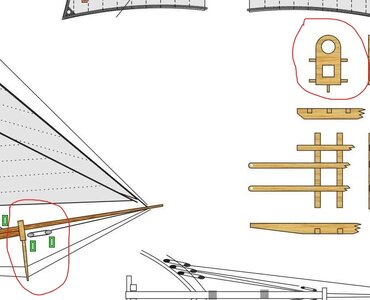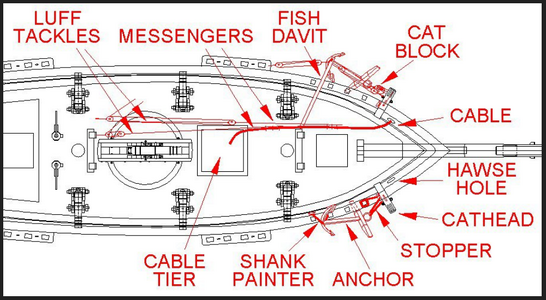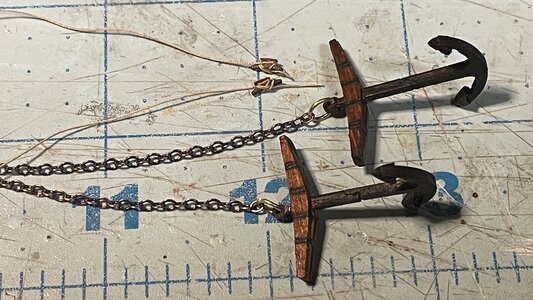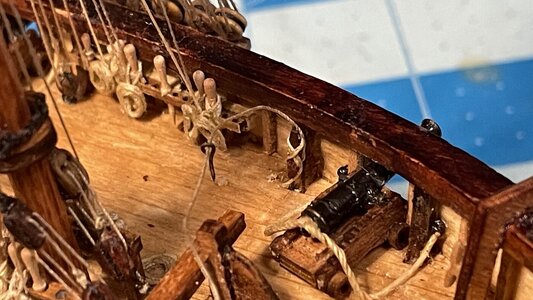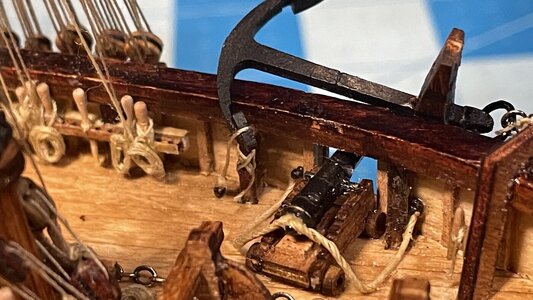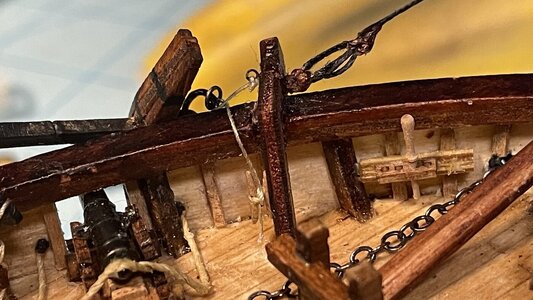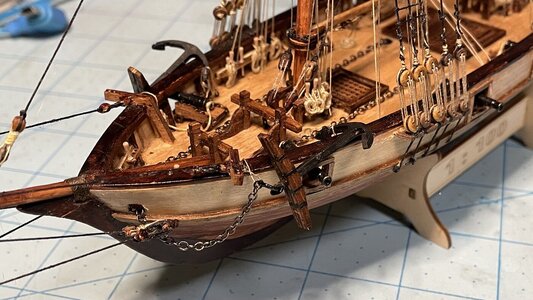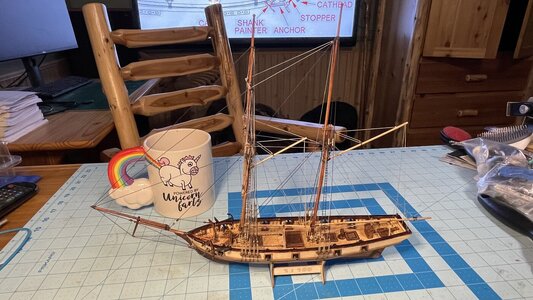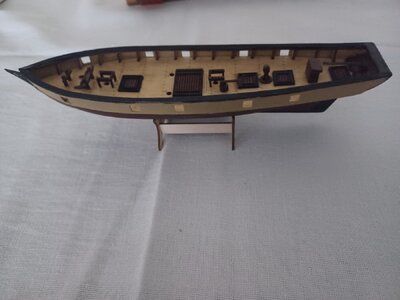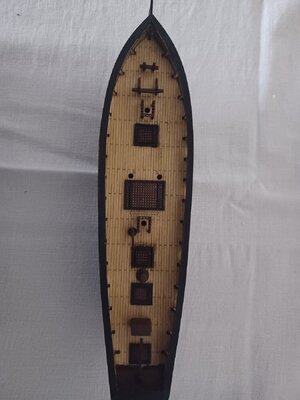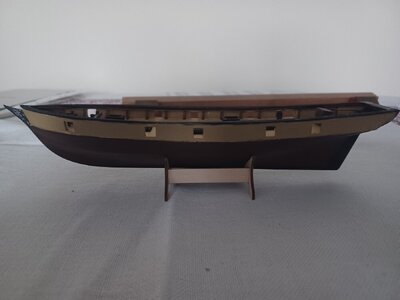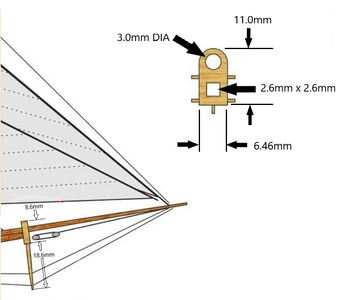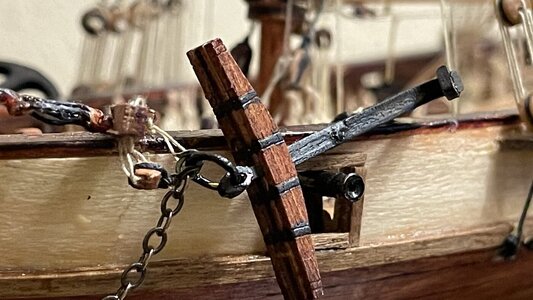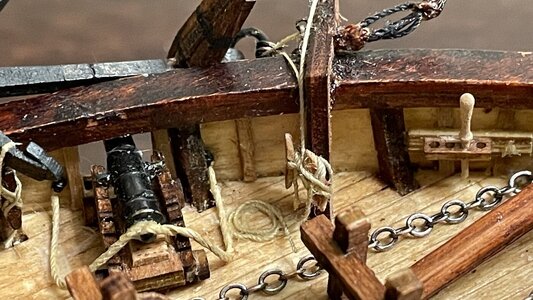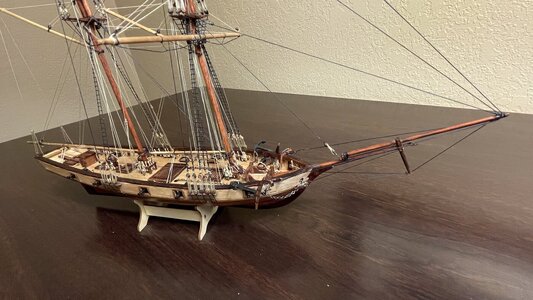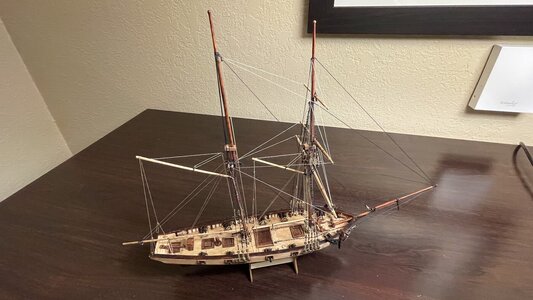Thanks for elaborating. I think I understand your method now! Unfortunately, it relies on a LOT of experience (apprenticeships should be MANDITORY in any field of work/play, imho). I'm still noodling about the way I will start to attack the stays. Atm the idea is a combo of your method and a bit of using the deadeye jig. But since I still have the music box to finish (it is taking WAY TOO LONG) I have time to ruminate.Tying the stays and keeping them with even intention, such that none of them are slack is always tricky. On this model, simple overhead knots, secure the lower end of the fore stays to the jib. The tension of each line is adjusted before the knots are cinched tight and secured with glue. It’s all about keeping the lines carefully balanced in tension and requires adjustments and patience.
Once the lower dead eyes are secure on the channels, I tie each day with a loop around the mast head. Taking a stay in one hand, I tied and overhead not loosely around the upper dead eye. Holding the upper dead eye above lower dead eye, I gauge the distance and adjust the overhand, not until the dead is roughly at the height you want to be 1/16 to an eighth of an inch shorter to count for stretching of the shroud on a large model. Once it’s slashed to the lower dead eye. There were no measurements, because I was using experience gain from previous models to make them consistent by judging the amount of stretch in each shroud. On a model of the small, making the dead eyes very close to their desired position is necessary, because the short shrouds don’t stretch as far as with a larger model. The tension in this model is not perfectly even, as you would expect, but each has appropriately placed the same.
When the upper dead eye is in position, the overhead not is tightened, and the height checked one final time before glue, is applied to the thread surrounding the dead eye, locking it in place. The bitter end of the shroud is then lead upwards and seized to the standing part as you normally would. Shrouds are always rigged in pairs, starting with one side, then the other, and alternating back-and-forth to maintain even tension on the mast head from port to starboard. The tension on each shroud is not great at all, being just enough to keep the thread taut, and enough, such that, if the thread stretches a bit over time, it will not go slack.
The dead eye spacing tool you mentioned could not be used on dead eyes a small as 3 mm. So, I rigged the shrouds without the tool, and tightened the lanyards between the dead eyes only as much as required to make the upper dead eyes, even with the lower ones, the flexibility in the shrouds provides enough leeway to allow you to adjust the height of the upper dead eye, and still maintain some tension if you tied the upper dead eye approximately at the correct position.
I can go into more detail if you provide some specific questions. Or, you can look at my build log for La Couronne and see how they were done on that previous model.
M.





